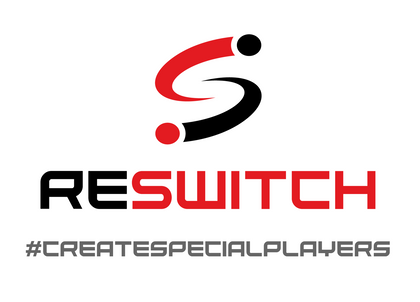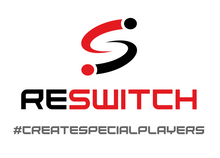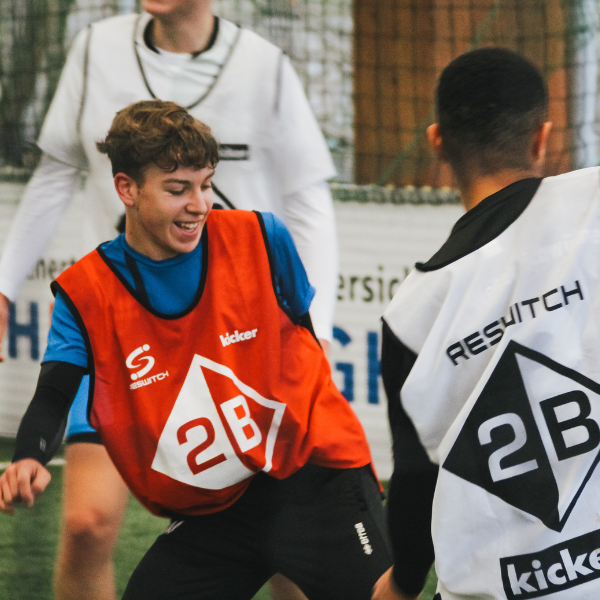Learning area
Learn here what cognitive training is and why it will become increasingly important in the future to combine your football training with cognitive elements.
We want to give you, as a trainer or club manager, the basic knowledge that will help you improve your training in the future. We have set up two areas for this, starting with general knowledge and ending with the specific application of RESWITCH.
The professionalization of athletics among athletes is now almost fully developed. Now the focus is shifted to the still diverse potential of the brain. Joachim Löw, for example, says that there is still “infinite scope” for the development of thinking and perception processes and that these will have to be intensively trained in the future in order to bring not only the body but also the head to the highest level. He also demands that football players, like chess players, plan up to twenty moves in advance. So it's about players being able to make decisions faster and better in game situations.
Michael Löbbert, sports doctor and neurologist, puts it in a nutshell: “The bottom line is: You not only need exercise to promote cognition, but also cognitive training to optimize athletic performance.” ( Source: RP-Online )
The term “cognition” is used in sports psychology as a collective term for the reception, processing, storage and forwarding of information within sporting activities. So let's take a closer look at points 1 & 2 of the graphic.

Sports science research has shown that cognitive abilities in athletes are the decisive factor for top performance (Source: Williams, MA, Davids, K., & Williams, J. (Eds.). (1999). Visual perception and action in sport. London: Routledge).
Cognitive abilities are the biggest difference between professional and amateur athletes. Professional athletes recognize situations and game patterns much faster than amateur athletes, which is crucial for anticipation in football. They recognize movement patterns of teammates, opponents and the ball and assess their processes above average and make decisions accordingly.
In addition, they also use different search strategies. This means that players can change perception depending on the situation. To recognize tactical patterns in 11vs11, they process different information than in 1vs1 or 3vs3 situations. They have the ability to absorb the right information, focus on it specifically and ignore unnecessary information, such as calls from outside or unevenness in the place (inhibition). ( Source: Williams, AM, 2000 ).

In a correctly perceived situation, a player may come across different possible solutions, as in the game situation shown. He now also needs decision-making skills to carry out one of the three actions. Dribbling, passing into depth or passing to the outside.
In order to make a decision, the player calls up previous experiences that are stored in the brain's working memory. But what are experiences? Experience is general, the knowledge or skills acquired through perception and learning. It also influences how often the player has already successfully carried out a possible action and how emotionally connected it is to him. This is also stored in his working memory.
All of this influences whether a player makes a decision quickly or slowly.
If a player takes longer to make a decision, this often happens if he had to weigh up decisions based on his experience and therefore make them consciously. This leads to time delays. If, on the other hand, a player makes decisions intuitively, i.e. unconsciously, the stimulus processing is significantly faster and the player acts immediately. This is often the case when the player has already experienced these situations many times and no longer has to consciously recall his experiences, but rather makes them instinctively.
However, if this player finds himself in even more complex situations in which he has less experience, his processing processes will also be delayed and he will decide later. (Source: Miyake, Friedmann, Emerson, Witzki, Howerter & Wagner, 2000; Diamond, 2013). The book by Daniel Kahneman, “ Thinking fast, thinking slowly” is suitable in terms of content.
The results of a study with NLZ and club players are interesting. who confirm this. The study shows that all players acted less intuitively the more solution options they recognized. So it took them longer to make a decision. However, it was also shown that NLZ players generated fewer options and were therefore able to make quicker decisions. So they ended the search earlier than the club players of the same age. (Source: Musculus L. Do the best players “take-the-first”? Examining expertise differences in the option-generation and selection processes of young soccer players.)
A distinction is made between “take the best” and “take the first” decisions. Research shows that as many as 60-90% of athletes choose the first option instead of the best option.
Dr. Peter Görlich from TSG Hoffenheim says that today there is hardly any physical difference between an 18-year-old NLZ player and a professional, but that young players make wrong decisions in game situations up to 40% more often than professionals. (Source: Görlich, TSG Hoffenheim, own study, https://www.digitale-exzellenz.de/smart-data-revolution-im-fusball/ ) That is why it is so important to improve the perception and decision-making functions.
Players must therefore constantly be faced with new situations in which they must quickly recognize complex relationships and decide and act accordingly.
WAS THAT IT?
No, because according to Walk, executive functions also have a significant influence on decision-making processes. The executive functions are made up of three areas:
1. COGNITIVE FLEXIBILITY
- adapt to new game situations
- Take the perspective of other players
- make decisions
2. INHIBITION
- Control impulses
- Dealing with errors
- Draw attention to relevant information
3. WORKING MEMORY
- memorize rules
- remember commands
- think and act strategically




